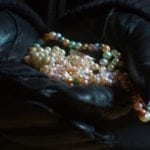 Movies and TV
Movies and TV  Movies and TV
Movies and TV  History
History 10 Things You Didn’t Know About the American National Anthem
 Technology
Technology Top 10 Everyday Tech Buzzwords That Hide a Darker Past
 Humans
Humans 10 Everyday Human Behaviors That Are Actually Survival Instincts
 Animals
Animals 10 Animals That Humiliated and Harmed Historical Leaders
 History
History 10 Most Influential Protests in Modern History
 Creepy
Creepy 10 More Representations of Death from Myth, Legend, and Folktale
 Technology
Technology 10 Scientific Breakthroughs of 2025 That’ll Change Everything
 Our World
Our World 10 Ways Icelandic Culture Makes Other Countries Look Boring
 Misconceptions
Misconceptions 10 Common Misconceptions About the Victorian Era
 Movies and TV
Movies and TV The 10 Coolest Stars to Set Sail on The Love Boat
 History
History 10 Things You Didn’t Know About the American National Anthem
 Technology
Technology Top 10 Everyday Tech Buzzwords That Hide a Darker Past
Who's Behind Listverse?

Jamie Frater
Head Editor
Jamie founded Listverse due to an insatiable desire to share fascinating, obscure, and bizarre facts. He has been a guest speaker on numerous national radio and television stations and is a five time published author.
More About Us Humans
Humans 10 Everyday Human Behaviors That Are Actually Survival Instincts
 Animals
Animals 10 Animals That Humiliated and Harmed Historical Leaders
 History
History 10 Most Influential Protests in Modern History
 Creepy
Creepy 10 More Representations of Death from Myth, Legend, and Folktale
 Technology
Technology 10 Scientific Breakthroughs of 2025 That’ll Change Everything
 Our World
Our World 10 Ways Icelandic Culture Makes Other Countries Look Boring
 Misconceptions
Misconceptions 10 Common Misconceptions About the Victorian Era
10 Truly Successful Thieves
Everyone knows that these days, with our enhanced technology, such as CCTV and DNA evidence, being a successful criminal is almost impossible. Because of the over-glamorous heists portrayed by Hollywood, most people assume that, in reality, crimes are almost impossible to get away with it. However lots of high-value robberies or burglaries have been attempted in recent times, and many criminals do get away with it. I have described, here, some cases in which people have been able to successfully steal cash or objects of high value, without having to suffer the consequences. It goes to show that, on occasion, crime does pay.
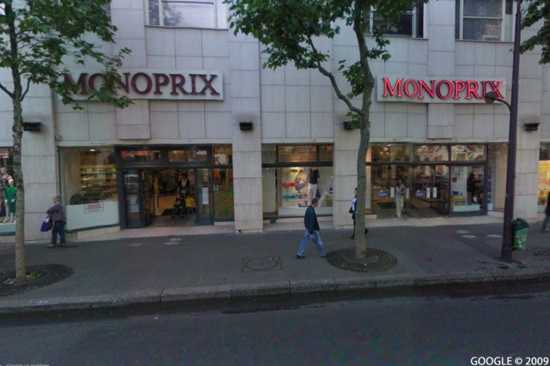
Since 2006, in France, an unknown gang of thieves have been emptying supermarket safes, using nothing more than a drill and a modified vacuum cleaner. The innovative group of bandits found a weakness in French supermarket Monoprix’s system of storing cash, and have been exploiting it ever since. Envelopes of cash are funneled into the safe via pneumatic suction tubes. Whereas breaching the safe itself might be considerably difficult, requiring explosives or safecracking, the thieves realized that if they just drilled into the delivery tubes near the safe and hooked up a powerful vacuum, they could suck the money out and get at it much more easily.
This mode of robbery is very unique as most thieves would resort to safecracking methods, which leave more evidence. Techniques such as using explosives, or tools like a thermal lance or plasma cutter, are the common choice of career burglars. As of 2011, the vacuum gang have successfully stolen almost $800,000, in fifteen night-time heists, leaving only a few CCTV tapes of masked men for evidence.
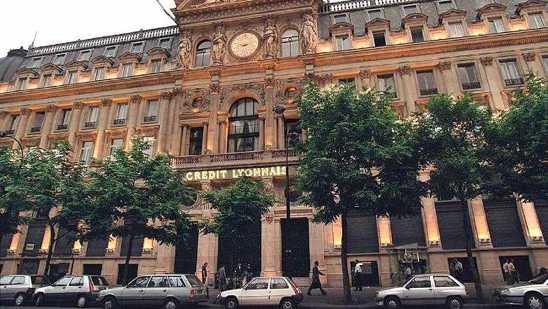
On March 30th, 2010, burglars got into a Credit Lyonnais bank, in central Paris, and emptied over a hundred safety deposit boxes, getting away with millions of Euros in cash and valuables. The gang tunneled into the bank’s basement from a neighboring cellar, and entered the vault through a small hole they cut using a thermal lance. The branch itself was closed for renovations, however, a security guard who heard noises from the basement confronted the robbers, who lashed him to a chair and told him not to move. Meanwhile, the gang ransacked 125 safe deposit boxes over the course of a few hours. They then set fire to the premises to eliminate any evidence. The fire set off the sprinklers, which alerted the tied-up guard, who assumed the robbers had left, so he raised the alarm. The full operation took around nine hours. As of 2011, the thieves are still at large, and because of the lack of evidence it is unlikely they will ever be brought to justice. This raid bears similarities to the 1971 Baker Street burglary, and shows that security hasn’t improved over time as much as it should have.
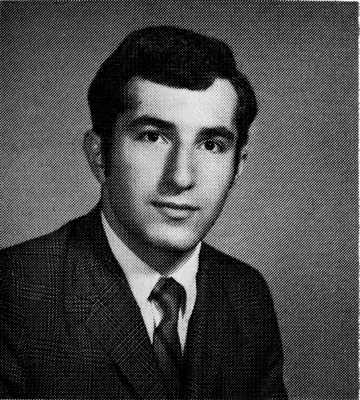
This particular criminal was successful in baffling police during a bank robbing career that spanned thirty years, and netted him over $2million. The reason he isn’t higher in the list is because of his eventual arrest. When Carl Gugasian was 15 years old, he was shot while attempting to rob a candy store and was sent to a State Youth Facility. After his release he took deliberate steps, not only to avoid a normal life, but to excel in a life of crime. He graduated from the University of Pennsylvania, earning a master’s degree in systems analysis. He also went out of his way to receive military weapons training.
Immediately after his graduation, Gugasian began to plan out mock robberies involving stolen cars. On eight separate occasions he was planning to commit his first bank robbery; however he repeatedly backed down before entering the bank. Eventually, he committed his first offense, using a stolen car for his getaway.
It was after this that he began to develop his unique bank robbery modus operandi, with such meticulous planning that police were powerless to stop him. He would first look for banks in small towns, that provide easy access to a freeway. He then narrowed the search further by looking for a bank that had late closing times, in August or winter months, so darkness could hide his escape. He only robbed banks on a Friday, which earned him the nickname: Friday Night Robber. He then created a cache to store any evidence that connected him to the crime (including the money), immediately after the robbery. He would return later to retrieve the stuff, when the heat had died down in the following weeks.
As for the robbery itself, Gugasian would burst into the bank five minutes before closing time, when customers weren’t likely to be there. Donning a gruesome face mask from a horror movie (Freddy Krueger was a favorite), he would vault the counter in a standing jump, landing with a crash on the other side, which terrified staff. He then grabbed everything he could from the cash tills, and left in less than two minutes. Immediately afterwards he would disappear into the well-scouted woods and run for several minutes to a dirt-bike. Then he would bike for a further few miles through the woods to an anonymous looking panel van, waiting on the other side, where he’d load the bike into the van and drive away to complete his escape.
In the end, despite his meticulous planning and execution, it was a simple case of bad luck that led to his arrest. Two young teenage boys found one of his caches whilst playing in the woods. It was full of weapons, ammunition and face masks which had his fingerprints. Only enough evidence existed to convict Gugasian of 5 bank robberies, resulting in a 17-year sentence, which he is currently still serving. Despite this, he has still gotten away with over 45 armed bank robberies; an amazing feat considering that, statistically, over 65% of armed bank robbery cases in the US are solved.
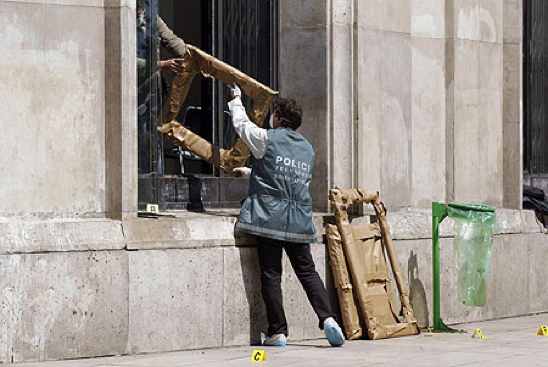
In May, 2010, a lone thief broke into the Paris Museum of Modern Art and stole masterpieces by artists such as Picasso and Matisse, valued at just under £100million. Unbelievably, the museum didn’t have a functioning burglar alarm, and the thief was able to simply smash a window and remove the pictures from their frames, without incident. The burglary was discovered at 7am the following morning. Although security guards were in the building at the time of the heist, they didn’t hear anyone enter, or notice the missing paintings or smashed window.
The crime was initially believed to be worth around £430million; however, this figure soon came down to just under £100million. Police have speculated that the paintings may have been “ordered” by a private collector, as this has been the case with previous art thefts in the city. As of 2011, no one has been arrested for the burglary and police believe that the painting is no longer in the possession of the thief. This theft is an example of very poor security around objects with extremely high value.
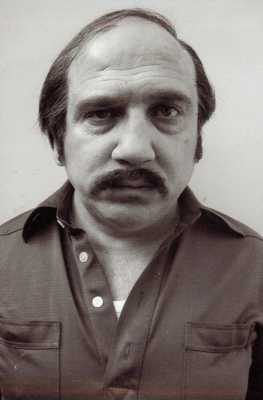
Bertie Smalls was an English armed robber who was active in the 1960s and 70s; a time considered the golden age of British armed robbery. Smalls committed his first robbery when he was 15, and, after being imprisoned for a short while, committed his life to crime. Before 1970, Smalls already had a string of high-profile robberies to his name, and was a respected figure in the London Underworld.
On the 9th February, 1970, Smalls led a gang from the Wembley Mob, in the East End of London, to rob a Barclays Bank branch in Ilford. The gang successfully got away with £237,736, a record at the time. Most of the team left England on various routes. Smalls, himself, boarded a train to Paris and from there went on to the Costa del Sol, where he read English newspapers looking for police updates about the robbery. The police made an early breakthrough, with an informant naming Smalls as the leader of the gang.
Smalls returned to England and gave himself up in Northampton, where he spent the Christmas period in jail. On June 2nd, Smalls asked for a meeting with the chief inspector. Smalls had been informed by his solicitor that he would be spending at least 25 years in prison. In an attempt to reduce his lengthy sentence, he offered the police a deal to turn over every person connected with any criminal activity he had ever been involved with.
Smalls was given immunity from prosecution in return for his help. At the Old Bailey, the trial of the Barclays Bank raid commenced, and Smalls testified against every one of his co-conspirators. As he finished giving evidence against his former friends, they reportedly sang to him: “We’ll meet again” by Vera Lynn. The trial ended with a jail time for the gang totaling over 100 years in prison. In the months after the trial, Smalls helped convict 21 more associates, for a total of over 300 years in prison. As a result, Bertie Smalls received no jail-time for his part in the Barclays raid, although there was rumored to be a £1million bounty on his head, instigated by powerful underworld figures such as the Kray twins. Despite this, he lived under police protection for the rest of his life. Even today, criminals who grass on their friends are said to be a “Bertie Smalls”. Pictured above is John Coyne portraying Bertie Smalls).
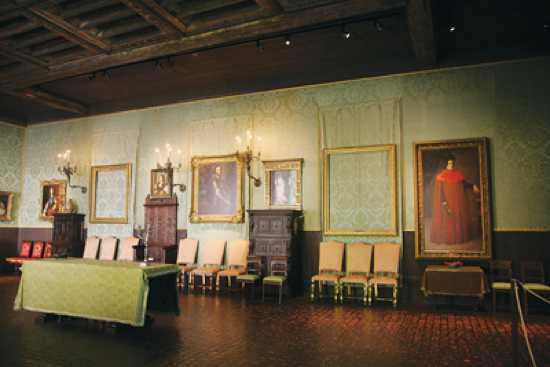
On the night of March 18th, 1990, two men, disguised as Boston police officers, entered the Isabella Stewart Gardner museum and stole an estimated $500,000,000 worth of artworks, including works by Rembrandt, Vermeer, Manet and Degas. They gained entry by impersonating Boston Police officers, and telling guards that they were responding to a call. Once inside, they rounded up the guards and handcuffed them, placing them in the basement whilst they raided the second floor of the museum. The next morning security arrived to relieve the guards, but instead found the museum ransacked.
The museum still has the empty frames hanging in place (see picture), as an homage to the stolen art, and to show their hope that they may one day see them returned to their rightful place. The criminals have never demanded a ransom, and they will never serve any time, even if they are caught, as the statute of limitations has run out. The museum has offered a $5million reward for information leading to the recovery of the artwork, and has also said they will: “ensure complete confidentiality”, implying they are willing to pay a ransom.
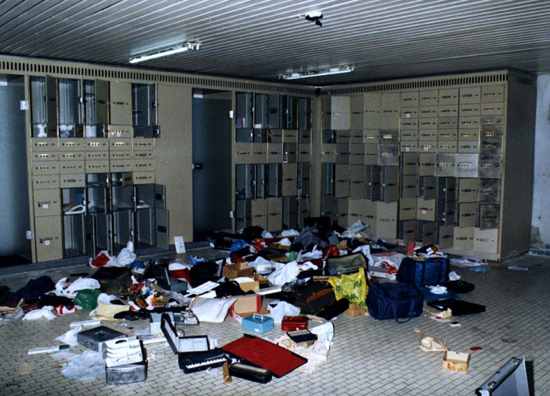
At approximately 7pm local time, on Friday the 14th of February, 2003, the School of Turin were about to perform the largest diamond heist the world has ever seen. Leonardo Notarbartolo, the leader of the gang, had reportedly remained in the vault that Friday night when the security doors closed automatically, at 7:00 pm. Several hours later, the elevator leading down to the vault was purportedly used by three other members of the School. The motion detector at the foot of the elevator had already been disabled by an application of spray silicone, and the vault’s light detector had been rendered useless with a simple piece of tape. With all of the prep work done, the School of Turin found themselves alone with the vault of the Antwerp Diamond Center.
Gaining access to the vault was not the same, however, as gaining entrance. The vault itself was protected by a dual lock system: a combination and a key lock, and two feet of reinforced steel. The key part was easy, as duplicates of the key had been made in advance. The combination lock was a bit more difficult, and the police have yet to release information pertaining to exactly how this was cracked.
Buried behind those two locks was something else; a fail-safe alarm that consisted of magnets that would notify the police as soon as the vault was opened, and the magnets were no longer touching. The alarm was automatic and could not be turned off. The fail safe was defeated with the most minimalist of moves. The crack team of burglars snipped the magnets out of their resting places and taped them together, allowing the vault door to be opened without ever separating the magnets.
The taping of the magnets was the final step. There, in the vault, the School of Turin pried open that heavy door, knowing that they would be undisturbed as they gazed upon their jackpot, the largest diamond heist in history. For the remainder of the weekend, they set to breaking into safety deposit boxes. Out of the 160 security boxes, the highly skilled crew worked through 123, popping the locks with a tool they created specifically for the job. But these professionals didn’t merely grab diamonds, of which the trade is much more restricted than most would have you believe, no, they grabbed the paperwork necessary to sell the diamonds as legitimate. That which couldn’t easily be resold, and even currency, items with combined values totaling in the millions of dollars, were left carelessly on vault floor.
By the time the heist had been discovered the thieves were long gone. However, the alleged leader of the gang, Leonardo Notarbartolo, was convicted on the basis of DNA found on a half-eaten sandwich found near the crime-scene. He was sentenced to 10 years in prison. The other School members were never apprehended and it is unlikely they will be, as the statute of limitations has, or will soon, run out.
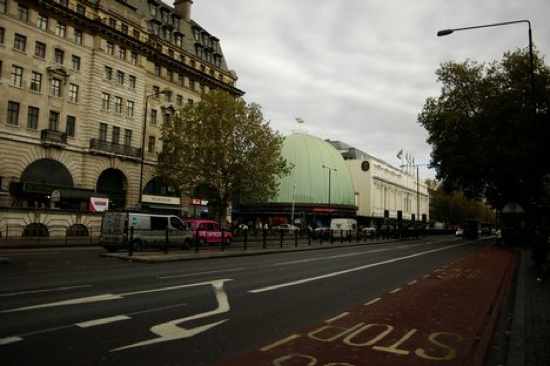
The Baker Street burglary took place in London, in 1971, when a team of well-equipped thieves tunneled into the Lloyds Baker Street Bank Vault and stole £3million (2011: £31.7million) worth of cash and valuables from safety deposit boxes. The criminals used a combination of metal cutting tools, such as a thermal lance and explosives, to tunnel into the vault from a nearby shop, and even had a lookout positioned on a rooftop. Near the end of the heist, a ham radio operator overheard some of the lookout’s walkie-talkie radio transmissions and contacted the police, who frantically searched over seven hundred banks within the area, in hopes of honing in on the location of the transmission. Policemen even searched the bank whilst the burglars were inside the vault, however, since no damage was visible on the vault door, police assumed they had the wrong bank and left. They were unable to catch the robbers at the time, but nearly two years later a number of men were charged in connection with the burglary. However, the true mastermind was a London car dealer, who was never apprehended. The story of the burglary has been immortalized in the semi-fictional movie “The Bank Job” starring Jason Statham.

The Pink Panthers are a Serbian gang of jewel thieves, who Interpol believe are responsible for some of the most glamorous armed robberies in history. Their bold style and intricate planning is thought of as artistry, even by criminologists. They have targeted many different countries, and have Japan’s most successful robbery among their thefts.
In 1993, the gang came to attention with their first robbery, when they stole a £500,000 diamond from a jeweler in London. The thieves hid the diamond in a jar of face cream resembling an act from the film: “Return of the Pink Panther” which earned them their nickname. Since then, the group have successfully robbed over one hundred and twenty different stores, in twenty different countries. Their attention to detail is the reason behind their high success rate. For example, before a heist in Biarritz, the gang coated a bench adjacent to the jewelry store in fresh paint to deter people sitting on it and seeing them in action.
The Pink Panthers are also known for their daring escapes and creative break-ins. In St Tropez, they robbed a store dressed in flowery shirts and then escaped on a speed boat. In another high-profile heist, the gang drove a pair of stolen limousines through a window into a Dubai mall, taking watches and other valuables worth over £8million. In yet another robbery, they dressed up as women and stole over $100million (£60million) worth of jewelry from a Harry Winston store in Paris, using Mission Impossible-style prosthetic make-up as a disguise.
Several gang members have been imprisoned. However, their group is thought to consist of over two hundred members, therefore, most have simply gotten away with their crimes. Their total haul is now believed to be in the billions of dollars. The alleged leader of the gang, Dragan Mikic, escaped from prison using a rope ladder, in 2005, whilst Pink Panthers fired machine guns at the prison wall. He has been on the run ever since.

Albert Spaggiari was a French career criminal who is best known for masterminding the Societe Generale bank robbery in France, 1976. As a young man he committed his first robbery in order to impress his girlfriend, but was soon captured and imprisoned. After his release and having served in the French military, Spaggiari became the owner of a photographic studio and was making a reasonable living as a law-abiding citizen. However, he apparently became bored with his middle-class life and sought to return to a life of crime.
He began to plan a break-in at the Societe Generale Bank, in Nice. He decided that, since the bank vault was located in the basement, the break-in would best be achieved by digging underneath from a nearby sewer system. He opened a box for himself and placed a loud alarm clock inside, setting it to go off at midnight in order to check for the existence any acoustic or seismic detectors that might foil his plan. In fact, the bank vault had no interior alarm or security systems, as it was considered utterly impenetrable.
Spaggiari then recruited a group of professional gangsters from Marseille to help him dig the tunnel. He instructed them to never drink coffee or alcohol, and always to get at least 10 hours sleep every day to avoid danger to the mission. After two months of digging, the tunnel was finished, and, during a Bastille Day festival when the bank was closed for a long weekend, the gang broke into the vault, itself. They opened up over 400 safety deposit boxes, stealing over 60million francs worth of money, securities and other valuables.
When the robbery was discovered, the following message was found on the vault wall: “sans armes, ni maine, ni violence” which is translated as: “without weapons, nor hatred, nor violence”. At first police were baffled, however, in the following months they arrested one suspect on a tip from a former girlfriend. The man later admitted being a part of the robbery and ratted out the entire gang, including Spaggiari. During his trial, however, Spaggiari managed to escape by distracting the judge, by handing him a fake piece of encoded evidence. He jumped out of the window, where a motorcycle was waiting for him and made his getaway.
He was never caught and the loot from the heist was never found. He died at the age of 52 of throat cancer, and his body was found dumped outside his mother’s house, presumably by unknown friends.

